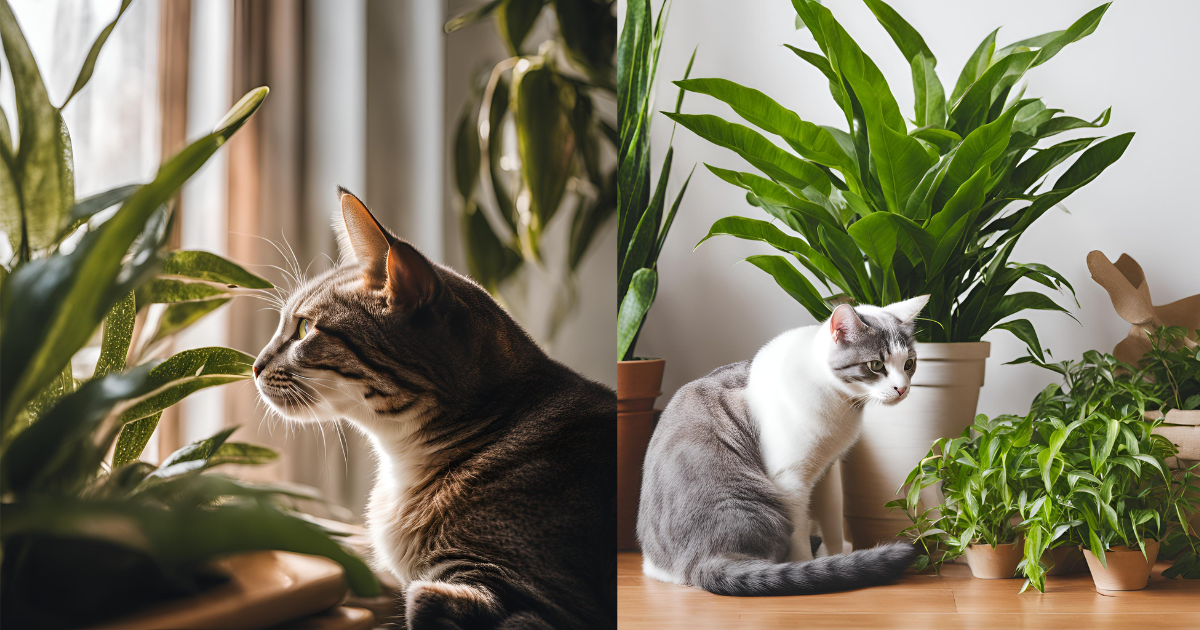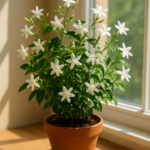ZZ plants, known scientifically as Zamioculcas zamiifolia, have become a favorite among indoor enthusiasts due to their attractive glossy leaves and low maintenance requirements. These hardy plants can thrive in various light conditions and require minimal watering, making them perfect for busy households. However, for cat owners, there’s an important question to consider: Are ZZ plants safe for our feline friends?
While ZZ plants can enhance the aesthetics of any living space, they pose a hidden risk for curious cats. The plant contains calcium oxalate crystals, which can be harmful if ingested by pets. Cats that nibble on ZZ plant leaves may experience symptoms ranging from mild irritation to more severe health issues. Understanding the potential risks and knowing how to respond in case of ingestion is crucial for pet owners. In this article, we’ll delve into the toxicity of ZZ plants, the symptoms to watch out for, and how to keep your cat safe while still enjoying the beauty of houseplants.
Introduce ZZ plants (Zamioculcas zamiifolia)

ZZ plants, or Zamioculcas zamiifolia, have become a go-to houseplant for novice and experienced plant enthusiasts. Known for their striking, waxy leaves that reflect light, these plants add a touch of elegance to any indoor space. One of the critical reasons for their widespread appeal is their resilience; ZZ plants can tolerate low light conditions and infrequent watering, making them ideal for busy households or those with less-than-ideal indoor lighting. Their ability to thrive with minimal care has made them a favorite choice for offices, apartments, and homes, offering lush greenery without needing constant attention.
Read to know more: Are Orchids Safe for Cats? Everything You Need to Know
Description of ZZ Plants (Appearance, Growth Habits, Popularity)
ZZ plants are easily recognizable by their glossy, deep green leaves that grow symmetrically along tall, upright stems. Each leaf is thick and waxy, giving the plant a polished appearance that reflects light beautifully. The plant grows in a rosette pattern, with new shoots emerging from the base and unfurling into mature stems. ZZ plants typically reach a height of 2 to 3 feet, making them perfect for tabletops, shelves, or floor plants.

Regarding growth habits, ZZ plants are slow growers but highly resilient. Thanks to their rhizomes, which store moisture, they can tolerate low light conditions and go weeks without water. This adaptability makes them an excellent choice for indoor environments with varying light levels and for plant owners who may occasionally forget to water.
Reasons for Their Popularity
The popularity of ZZ plants largely stems from their low maintenance requirements and striking appearance. Their ability to thrive in indirect light and survive with minimal watering makes them a favorite among busy individuals and those new to plant care. Additionally, their attractive, glossy foliage adds a touch of sophistication to any room, enhancing the decor without demanding much attention. This combination of beauty and hardiness has solidified ZZ plants as a staple in many homes and offices.
Toxicity of ZZ Plants
ZZ plants are indeed toxic to cats. The primary poisonous component is calcium oxalate crystals throughout the plant, including in the leaves, stems, and roots. These crystals are sharp and insoluble and irritate soft tissues when they contact them.
When a cat chews on or ingests any part of the ZZ plant, these calcium oxalate crystals can embed themselves in the mucous membranes of the mouth, throat, and digestive tract. This can lead to uncomfortable symptoms such as oral irritation, excessive drooling, difficulty swallowing, and vomiting. In more severe cases, the crystals can cause swelling in the mouth and throat, potentially leading to breathing difficulties. While ZZ plant toxicity is rarely fatal, it can cause significant discomfort for cats and requires prompt attention to prevent complications.
Symptoms of ZZ Plant Poisoning in Cats
If a cat ingests any part of a ZZ plant, it may exhibit several poisoning symptoms due to the calcium oxalate crystals. Common symptoms include:
- Oral Irritation: Cats may show signs of discomfort in the mouth, such as pawing at the face, excessive drooling, or refusing to eat.
- Swelling: Inflammation of the mouth, tongue, and throat can occur, potentially leading to difficulty swallowing or breathing.
- Vomiting: After ingesting parts of the ZZ plant, cats might vomit as a reaction to the irritation in their digestive system.
- Lethargy: The discomfort and pain from ingestion can cause a cat to become unusually quiet or passive.
- Lack of Appetite: The irritation and swelling can make eating painful, resulting in a loss of appetite.
- Gagging or Choking: A cat might gag or choke due to irritation and swelling in the throat area, indicating distress.
What to Do If Your Cat Ingests a ZZ Plant

If your cat ingests a ZZ plant, follow these steps to ensure its safety:
- Assess the Situation: Check if your cat has visible symptoms such as drooling, vomiting, or difficulty swallowing. Note how much of the plant was ingested.
- Remove Access: Immediately remove the ZZ plant from the cat’s reach to prevent further ingestion.
- Contact Your Veterinarian: Call your vet or an emergency pet poison hotline for guidance. Provide details about the plant and symptoms your cat is showing.
- Do Not Induce Vomiting: Unless specifically directed by a veterinarian, do not attempt to induce vomiting. This could cause additional harm.
- Monitor Your Cat: Keep an eye on your cat for any changes in behavior or worsening symptoms.
- Follow Veterinary Instructions: Your vet may recommend bringing your cat in for an examination. They might suggest treatments such as flushing the mouth or administering medications to alleviate symptoms.
- Provide Comfort: Ensure your cat is comfortable and has access to water while waiting for professional care.
When to seek help from a doctor?
You should contact a veterinarian in the following situations:
- Immediate Symptoms: If your cat shows any signs of poisoning, such as excessive drooling, vomiting, difficulty swallowing, or swelling in the mouth or throat.
- Ingestion of Significant Amounts: If you suspect or know your cat has ingested a large amount of the ZZ plant or any part of it, seek advice regardless of immediate symptoms.
- Persistent Symptoms: If symptoms like lethargy, lack of appetite, or difficulty breathing persist or worsen, it’s crucial to consult a vet.
- Uncertainty: If you’re unsure about the amount of plant ingested or the severity of symptoms, it’s always better to avoid caution and contact a veterinarian.
- Emergency Situations: If your cat has severe reactions, such as trouble breathing or seizures, seek emergency veterinary care immediately.
Tips for Keeping ZZ Plants Out of Reach of Cats
- High Placement: Put the ZZ plant on high shelves or in hanging baskets that are difficult for cats to access.
- Use Sturdy Plant Stands: Opt for tall, narrow plant stands that are hard for cats to climb or knock over.
- Designated Plant Area: Keep the plant in a closed-off room or use a plant shelf with a glass cover to protect it.
- Barriers: Use decorative screens or obstacles around the plant to keep cats away.
- Pet-Safe Repellents: Place citrus peels or use pet-safe sprays around the base, as cats dislike the smell.
- Motion-Activated Sprays: Set up motion-activated sprays near the plant to startle cats if they get too close.
- Double-Sided Tape: Apply double-sided tape around the plant pot, which cats find unpleasant to touch.
- Provide Alternatives: Offer cat-friendly plants like cat grass or catnip to divert their attention.
Alternatives to ZZ plants that are safe for cats

If you’re looking for cat-safe alternatives to ZZ plants, there are several attractive options to consider:
- Spider Plant (Chlorophytum comosum): With its arching leaves and ease of care, the spider plant is a great choice. It’s non-toxic to cats and adds a touch of greenery to any room.
- Boston Fern (Nephrolepis exaltata): This lush, feathery fern is safe for cats and thrives in indirect light and humid conditions, making it a perfect indoor plant.
- Areca Palm (Dypsis lutescens): Also known as the butterfly palm, this plant has elegant, feathery fronds and is non-toxic to cats.
- Calathea: Known for its striking, patterned leaves, Calathea is safe for cats and does well in low—to medium-light conditions.
- Parlor Palm (Chamaedorea elegans): A low-maintenance plant with beautiful arching fronds that’s safe for pets and ideal for indoor spaces.
- Bamboo Palm (Chamaedorea seifrizii): This cat-safe palm has a tropical look and thrives in indirect light, adding a refreshing vibe to your home.
Using cat-safe deterrents to keep cats away from plants.
To keep cats away from plants safely, consider using these cat-friendly deterrents:
- Citrus Peels: Scatter orange, lemon, or lime peels around the base of the plant. Cats dislike the strong scent of citrus, making it an effective natural deterrent.
- Vinegar Spray: Mix equal parts water and vinegar in a spray bottle and lightly mist the area around the plant. The smell will deter cats without harming the plant.
- Pet-Safe Repellent Sprays: Use store-bought, cat-safe repellent sprays to keep pets away from plants. These are usually odourless to humans but unpleasant for cats.
- Double-Sided Tape: Place double-sided tape on the surface around the plant pot. Cats dislike the sticky texture on their paws and will avoid the area.
- Motion-Activated Sprays: Set up motion-activated air sprays near your plants. They release a harmless burst of air when a cat gets too close, startling them without causing harm.
- Aluminium Foil: Lay sheets of aluminum foil around the base of the plant. Cats generally dislike the texture and sound of foil.
FAQ: ZZ Plants and Cats
1. Are ZZ plants toxic to cats?
Yes, ZZ plants are toxic to cats. They contain calcium oxalate crystals that can cause irritation and discomfort if ingested.
2. What are the symptoms of ZZ plant poisoning in cats?
Symptoms may include excessive drooling, oral irritation, vomiting, difficulty swallowing, swelling in the mouth and throat, and lethargy.
3. What should I do if my cat eats a ZZ plant?
Remove access to the plant immediately, monitor your cat for symptoms, and contact your veterinarian for guidance. Follow any instructions given by your vet.
4. How can I keep my cat away from ZZ plants?
Place the plant on high shelves, use barriers or plant stands, employ pet-safe repellents like citrus peels or sprays, and provide alternative distractions like cat grass.
5. Are there safe alternatives to ZZ plants for homes with cats?
Secure options include spider plants, Boston ferns, Areca palms, Calathea, parlor palms, and bamboo palms. These plants are non-toxic to cats and offer a similar aesthetic.
6. When should I contact a veterinarian regarding plant ingestion?
Contact your vet if your cat shows poisoning symptoms, if a large amount of the plant is ingested, or if symptoms persist or worsen. For severe reactions, seek emergency care immediately.
Conclusion
In conclusion, while ZZ plants are a popular choice for their attractive appearance and low maintenance, they pose a risk to cats due to their toxicity. The calcium oxalate crystals in these plants can cause significant discomfort if ingested. It’s crucial to monitor your cat for symptoms such as drooling, vomiting, or difficulty swallowing and to seek veterinary care if any signs of poisoning occur. To keep your cat safe, consider placing ZZ plants out of reach or opting for cat-friendly alternatives. Ensuring your pet’s safety while enjoying indoor greenery is essential for a harmonious home.







